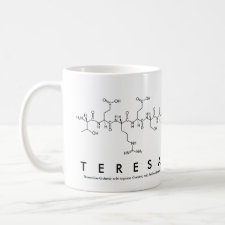
Authors: Zolek T, Lulinski P, Maciejewska D
Article Title: A computational model for selectivity evaluation of 2-(3,4-dimethoxyphenyl)ethylamine (homoveratrylamine) imprinted polymers towards biogenic compounds.
Publication date: 2011
Journal: Analytica Chimica Acta
Volume: 693
Issue: (1-2)
Page numbers: 121-129.
DOI: 10.1016/j.aca.2011.03.009
Alternative URL: http://www.sciencedirect.com/science/article/B6TF4-52BPK48-1/2/538f7c449af41e11c0d8115c697000e4
Abstract: A computational model was proposed to evaluate the affinity and selectivity of 2-(3,4-dimethoxyphenyl)ethylamine (homoveratrylamine) imprinted polymers. Four functional monomers: methacrylic acid, 1-vinylimidazole, 4-vinylpyridine, and allylamine were taken into account. Two dielectric constants were used for solvent simulations: a value of ε = 2.38rij for toluene was used in the analysis of prepolymerization complexes, and a value of ε = 36rij for methanol-water was used in the investigations of adsorption. Theoretical analysis predicted the highest affinity for the polymer synthesized from methacrylic acid. Experimental results confirmed the finding. The prepolymerization complex formed by homoveratrylamine and four methacrylic acid molecules was used to design the polymer cavity. The selectivity of the polymer was analyzed as a simulation of adsorption of six compounds in the cavity by docking procedure. Selected compounds are structurally related to the template or can be present in biological samples. The designed polymer has high selectivity towards homoveratrylamine. The proposed computational procedure could be used for successful evaluation of the imprinted polymers
Template and target information: 2-(3,4-dimethoxyphenyl)ethylamine, homoveratrylamine
Author keywords: molecular modeling, Molecularly imprinted polymers, Homoveratrylamine, catecholamines



Join the Society for Molecular Imprinting

New items RSS feed
Sign-up for e-mail updates:
Choose between receiving an occasional newsletter or more frequent e-mail alerts.
Click here to go to the sign-up page.
Is your name elemental or peptidic? Enter your name and find out by clicking either of the buttons below!
Other products you may like:
 MIPdatabase
MIPdatabase









